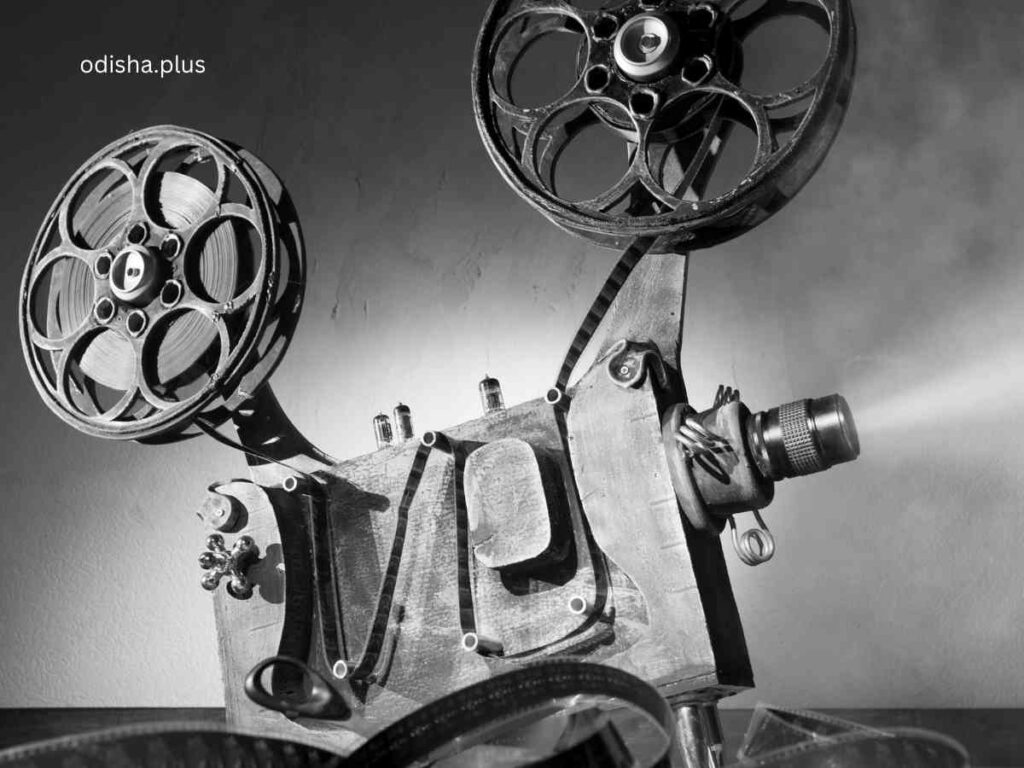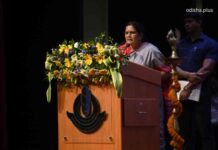Odia cinema, fondly known as Ollywood, began its journey in 1936 with the release of Sita Bibaha. Despite its rich legacy, the industry has struggled to gain prominence
Bhaskar Parichha

Odia cinema, commonly referred to as Ollywood, encounters numerous obstacles that have impeded its development and acknowledgment, despite a rich heritage that traces back to the inaugural Odia film, Sita Bibaha, released in 1936. For many years, Odia cinema has faced criticism for its tendency to create formulaic films, frequently remaking South Indian or Hindi productions, which lack originality.
Clichéd Elements
These films generally adhere to predictable narratives filled with clichéd elements, such as romantic themes characterized by exaggerated performances and outdated dance routines, failing to connect with contemporary viewers.
The industry’s dependence on imitating other regional cinemas, especially during the early 2000s, resulted in a waning interest from audiences, as these films often lacked cultural significance or relevance to Odia society.
Although recent works like Daman (2022) and Pratikshya (2022) indicate a movement towards original and socially pertinent narratives, the industry continues to grapple with the challenge of consistently delivering high-quality and innovative content.
The cinema market in Odisha is relatively limited, characterized by insufficient theater infrastructure, especially in rural regions. While critically acclaimed films tend to thrive in urban areas, smaller theaters face challenges in maintaining operations.
OTT Platform
Historically, the audience’s inclination towards mainstream, escapist narratives has restricted filmmakers from delving into innovative or unconventional subjects. Although the emergence of OTT platforms and increased access to global and regional content have shifted audience expectations, Odia cinema has been slow to respond to these changing preferences.
The scarcity of suitable cinema halls, particularly in culturally important cities like Puri, where Sita Bibaha made its debut, hampers the distribution of Odia films.
The deteriorating condition of historic venues such as Laxmi Talkies underscores the neglect of exhibition facilities. Additionally, ineffective public exhibition policies and their enforcement further complicate the situation, hindering films from reaching broader audiences.
The Odia film industry is hindered by insufficient financial resources and a lack of governmental support. Producers encounter challenges in achieving profitability due to the absence of subsidies, which are available in other states that support regional cinema.
Film policies introduced by the Odisha government, such as those in 2019 and 2025, have frequently proven ineffective due to poor funding and implementation strategies, resulting in a lack of a solid framework for industry growth.
The combination of high production costs and low box-office revenues discourages investment in more ambitious projects, compelling filmmakers to focus on low-budget, risk-averse productions.
Fostering Talent
Additionally, there is a deficiency of skilled professionals, including directors, writers, and technicians, who are capable of creating films that can compete on a national or international level.
Furthermore, excessive interference from producers in the creative process and a limited exposure to global cinema among filmmakers have been identified as significant obstacles to achieving high-quality filmmaking.
Although institutions such as the Biju Patnaik Film & TV Institute are present, their effectiveness in fostering talent has been relatively minimal when compared to similar institutions in states like Bengal or Kerala.
In Odisha, cinema is frequently perceived as a trivial art form by the semi-feudal society and the English-speaking middle class, lacking the academic and cultural esteem it holds in regions like Bengal or Kerala. This societal perception hinders substantial investment and involvement with the medium.
The industry has faced challenges in preserving its ties to Odia cultural identity, with numerous films failing to embody the state’s rich literary and artistic legacy, including the works of Gopinath Mohanty or Manoj Das.
Generally, Odia films have perpetuated patriarchal stereotypes, especially in their depiction of women, confining their roles to traditional or submissive figures. This has estranged audiences who are in search of more progressive storylines.
The representation of marginalized communities, including individuals with disabilities, has frequently been inadequate or based on stereotypes, neglecting to address current social issues with the necessary sensitivity.
While early Odia cinema was heavily influenced by mythology and literature, the industry has largely shifted away from adapting the state’s abundant literary heritage, which could offer engaging and authentic narratives.
Literary Adaptations
Films such as ‘Matira Manisha’ and ‘Malajahna’ achieved success through literary adaptations, yet such instances have become increasingly uncommon, partly due to commercial pressures and audience tastes. Ineffective marketing strategies and distribution channels have hindered the visibility of Odia films, both within Odisha and in wider markets.
Even films that receive critical acclaim often struggle to attract national or international recognition because of these limitations. The industry’s dependence on holiday releases for major films further constrains its capacity to maintain a steady presence in theaters.
The 1970s and 1980s are regarded as the pinnacle of Odia cinema, marked by socially significant films from directors such as Prashanta Nanda and Mohammad Mohsin, which achieved both critical acclaim and commercial success.
However, the industry faced a downturn in the 1990s and 2000s, primarily due to an influx of subpar remakes and a decline in audience confidence. Additionally, events like the devastating super cyclone of 1999, which severely impacted infrastructure, including Kalinga Studio, further hindered the industry’s progress.
Post-Covid Films
Nevertheless, there are indications of a resurgence in Odia cinema, especially in the post-COVID era. Films such as Daman (2022), Pratikshya (2022), and Pushkara (2023) have focused on original narratives rooted in Odisha, garnering both critical praise and commercial viability. The revival of literature-inspired films and a rise in professionalism, exemplified by actors auditioning for roles, suggest a transition towards a cinema that prioritizes quality.
Discussions on social media indicate an increasing sense of optimism among audiences, highlighting the need to support theaters and promote content-driven films similar to those in Malayalam cinema.
Initiatives such as designating April 28 as Odia Cinema Day are proposed to enhance cultural pride and visibility within the industry. To tackle these challenges, the industry could prioritize the implementation of an effective film policy that includes subsidies, infrastructure development, and a dedicated fund, to the extent of Rs 50 crore.
Additionally, it is essential to strengthen film institutes and provide filmmakers with exposure to international cinema. Leveraging Odisha’s literary heritage can help in crafting authentic and relatable narratives.
Cinema Halls
Furthermore, expanding the audience base through improved marketing strategies, OTT releases, and culturally relevant content is crucial. Revitalizing and establishing cinema halls, particularly in rural regions, will also aid in broadening the reach. To conclude, although Odia cinema faces systemic challenges such as a deficiency in originality, inadequate infrastructure, and a lack of support, recent achievements and an increasing focus on quality indicate a possibility for rejuvenation. With dedicated efforts from filmmakers, audiences, and governmental bodies, Odia cinema has the potential to restore its cultural importance and national recognition.
(The author is a senior journalist and columnist. Views expressed are personal.)

























